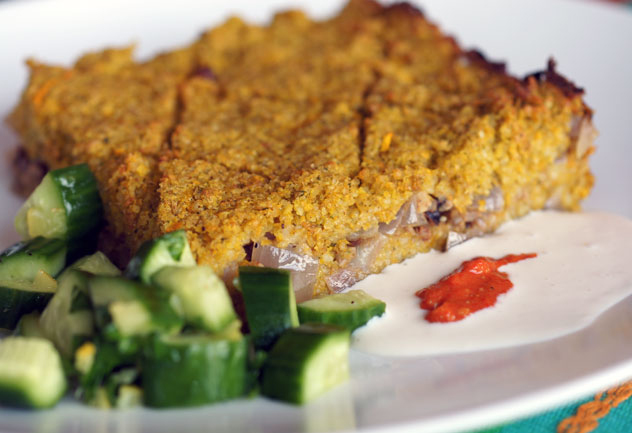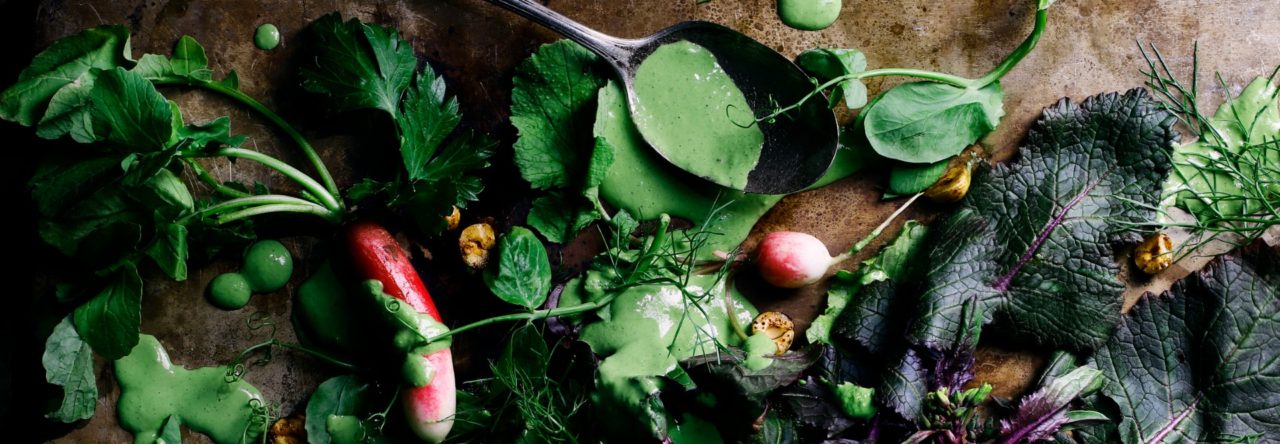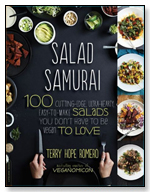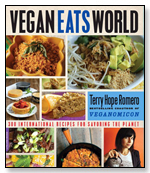
Note: This is a long tale of pumpkins and punk, and a sample of what I’m cooking up for my next book. Enjoy.
Boston, early 90’s, the Middle East club on Massachusetts Ave on a weekend evening. The basement is a sweaty, thundering warren inhabited by youthful bodies, hardcore punk bands and the aroma of warm beer.
Though not exactly my local club (home being a two hour drive on dimly lit Connecticut highways), a road trip in the icy heart of winter to Cambridge couldn’t stop the primal need for the grating roar of a Middle East club basement show.
The lineup of bands seen have since collided together in my memory faster than a combat boot to an unsuspecting nose in a mosh pit. But what really shines is when I first realized that The Middle East, that church of collective worship to underground culture, also was a restaurant. A Middle Eastern one (shocking!), Lebanese in character, and a damned fine one.
The revelation all began with a piece of bread. A lot of good meals do. Upstairs on a mission to locate beer and to briefly recuperate from the blazing heat and sounds below, I squeezed myself into a table between army jacket clad elbows and tattooed forearms. There’s a basket of fresh pita triangles folded in a plastic bag in the center of the table, in strangely domestic contrast to the parade of anarchy around me.
Famished, I tear off a corner of soft, bandana-thin pita bread. That’s when it finally occurs to me that this pita is not just for tipsy nibbling, but serves a greater purpose; to scoop up creamy hummus or wrap up crunchy falafel. A few smart kids in the dining room know that falafel makes for superior post-punk show eating. I learn this crucial fact by watching them and falafel forever becomes a part of the punk show experience for me. But it wouldn’t be until years later during Sunday afternoon brunches (instead of Saturday night slamfests) that I would gather a real appreciation for exquisite meals that stole the show right above the basement mosh-pit.
The Middle East menu is host to many hits: garlicky whipped toom spread, great falafel, and crowd-pleasing hummus. But what I’m talking about is their remarkable pumpkin kibbe. The basic premise of kibbe is a traditional Middle Eastern dish combining bulgur wheat (pre-cooked, cracked wheat kernels), onions, spices and typically meat into a soft dough. This can fried, baked or even served uncooked, something like a paté. The Middle East serves the meaty stuff, but their vegetarian offering, a baked kibbe made with pumpkin, is the headlining act. Their pumpkin kibbe is tender, golden, gently spiced loaf moist with pumpkin and a pronounced wheaty flavor. It’s pure comfort food, great served hot on an icy Cambridge winter evening or even room temperature in warmer weather.
I don’t get to The Middle East very often these days, but I’ve been experimenting how to bring back that punkin’ kibbe spirit to my Queens kitchen. My take on the filling includes walnuts and abundant sautéed red onion. A bounty of coriander, cumin and nutmeg makes some beautiful music paired with the pumpkin or your choice of winter squash: tropical pumpkin, butternut or kabocha are all different and delicious.
This kibbe does require a food processor to grind the final mix to perfection, and the shredder attachment makes fast work of the winter squash. This is a “project” recipe, something you’ll want to make on the weekend or if you don’t mind cooking until a little later in the evening on weeknight. A bulgur wheat tip: use the finest granule you can buy. Look for “No. 1 bulgur” that denotes the smallest sized cut of wheat, as these fine grains create a dough that’s easier to grind and that bakes into a fine, tender pumpkin loaf.
So lace up your boots, turn the volume up to 11 and sweat it out with the food processor for some pumpkin kibbe. It’s a great Sunday night meal that easily heats up for great leftovers. Slather it with a soy yogurt sauce, your favorite hot sauce, a tahini sauce for extra kick and serve it up with a green salad with cucumbers and mint. Leftovers make amazing lunches and unusual, punky brunches.
Baked Punkin’ Pumpkin Kibbeh
Serves 4-6
Onion walnut filling:
- 2 tablespoons olive oil
- 1 pound red onions, peeled and finely diced
- 2/3 cup finely chopped walnuts
- ½ teaspoon ground cinnamon
- ½ teaspoon ground cumin
- 1/2 teaspoon sea salt
- Pinch ground cloves
Kibbe dough
- 2 cups fine grained bulgar wheat (No. 1 bulgur)
- 1 to 1 ¼ pound pumpkin or winter squash, peeled and seeds removed
- 2 large yellow onions (about ½ pound), peeled and coarsely chopped
- ¼ cup olive oil
- ¼ cup finely chopped parsley
- 1 teaspoon dried oregano
- 1 ¼ teaspoons ground cinnamon
- 1 ¼ teaspoons sea salt
- 1 teaspoon ground coriander
- 1/2 teaspoon ground mace or nutmeg
- ½ teaspoon ground pepper
- Additional olive oil for brushing (about 3-4 tablespoons)
1. Pour bulgur into a large, fine-gauge mesh strainer and rinse with cool water. Place the strainer on top of bowl to allow any excess water to drain.
2. Make the filling: In a large 12 inch skillet over medium heat, fry the diced red onion with the olive oil and sauté until soft and translucent, about 10-14 minutes. Stir in walnuts, cinnamon, salt, and ground cloves and fry for another 2 minutes. Turn off the heat and let cool.
3. Fit the food processor with a shredding blade and feed a few chunks of pumpkin at a time into the processor until all of it is finely shredded; if the processor bowl starts to get too full transfer some of the pumpkin to a mixing bowl. Now, feed the onion through the processor to grind it into a pulp. Things will start to get kind of juicy, but that’s okay! Empty any remaining pumpkin, onion and their juices into the mixing bowl and stir in the soaked bulgur, olive oil, parsley, oregano, cinnamon, salt, coriander, mace/nutmeg, and pepper and mix thoroughly with your hands. Once again, working in 2-3 batches, run the pumpkin mixture through the food processor one more time to form a thick, evenly ground paste.
4. Preheat oven to 375 degrees. Brush a deep 9 x 13 x 2 (or similar sized) ceramic or glass baking dish with plenty of olive oil. Use your hands to pat in half of the kibbeh mixture into the bottom of the dish, smoothing out the surface to make it as even as possible. Spread the filling mixture over the kibbeh all the way to the edges, then top with remaining kibbeh mixture and pat out evenly to the edges of the pan. Use a sharp knife dipped in water to score the top with a diamond pattern (make the diamonds about 1 inch wide), cutting no more than ¼ inch into the kibbeh crust. Brush with plenty of olive oil and bake for 35 to 40 minutes or until golden and firm. If desired broil on high for 2-3 minutes to deepen the color of the crust. Let kibbeh stand for 10 minutes before slicing; the cooling allows it to firm up, making it easier to lift out of the pan with a bent spatula.








